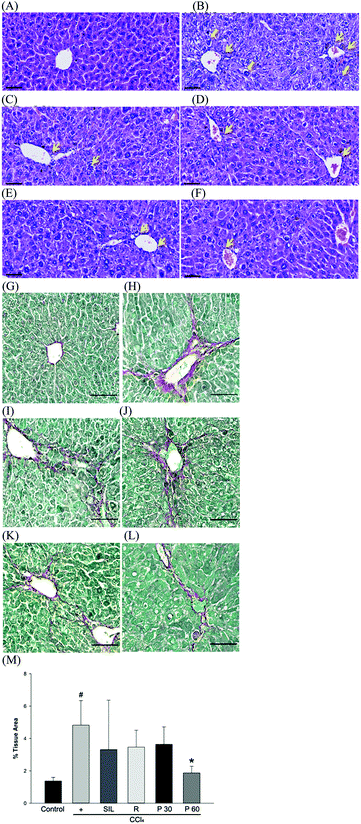 Open Access Article
Open Access ArticleCreative Commons Attribution 3.0 Unported Licence
Correction: Hepatoprotective effect of piceatannol against carbon tetrachloride-induced liver fibrosis in mice
Wei-Lun
Hung
a,
Yi-Ting
Hsiao
b,
Yi-Shiou
Chiou
b,
Kalyanam
Nagabhushanam
c,
Chi-Tang
Ho
d and
Min-Hsiung
Pan
*bef
aSchool of Food Safety, Taipei Medical University, Taipei, 11031, Taiwan
bInstitute of Food Science and Technology, National Taiwan University, Taipei 10617, Taiwan. E-mail: mhpan@ntu.edu.tw; Fax: +(886)-2-33661771; Tel: +(886)-2-33664133
cSabinsa Corporation, East Windsor, New Jersey 08520, USA
dDepartment of Food Science, Rutgers University, New Brunswick, New Jersey 08901, USA
eDepartment of Medical Research, China Medical University Hospital, China Medical University, Taichung 40402, Taiwan
fDepartment of Health and Nutrition Biotechnology, Asia University, Taichung, 41354, Taiwan
First published on 11th November 2021
Abstract
Correction for ‘Hepatoprotective effect of piceatannol against carbon tetrachloride-induced liver fibrosis in mice’ by Wei-Lun Hung et al., Food Funct., 2021, DOI: 10.1039/D1FO02545G.
The authors regret that an incorrect version of Fig. 3 was included in the original article. The correct version of Fig. 3 is presented below.
The Royal Society of Chemistry apologises for these errors and any consequent inconvenience to authors and readers.
| This journal is © The Royal Society of Chemistry 2021 |


